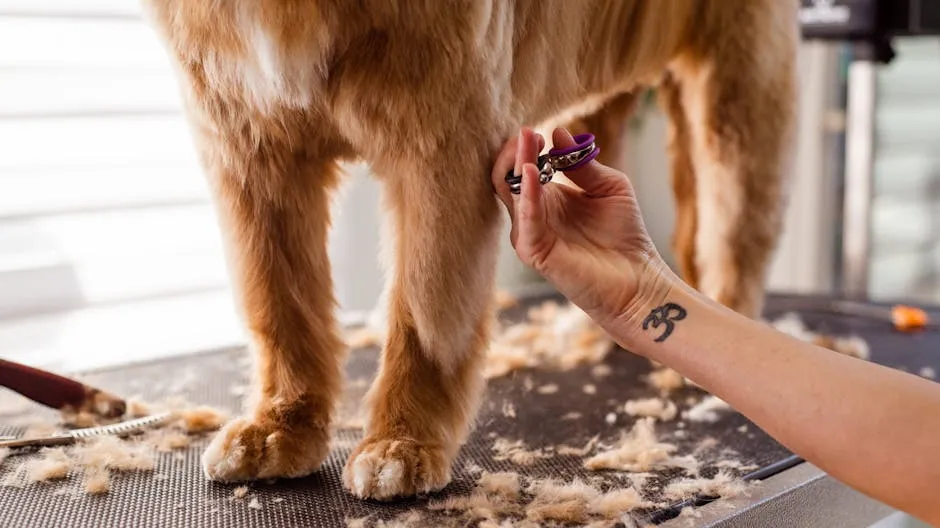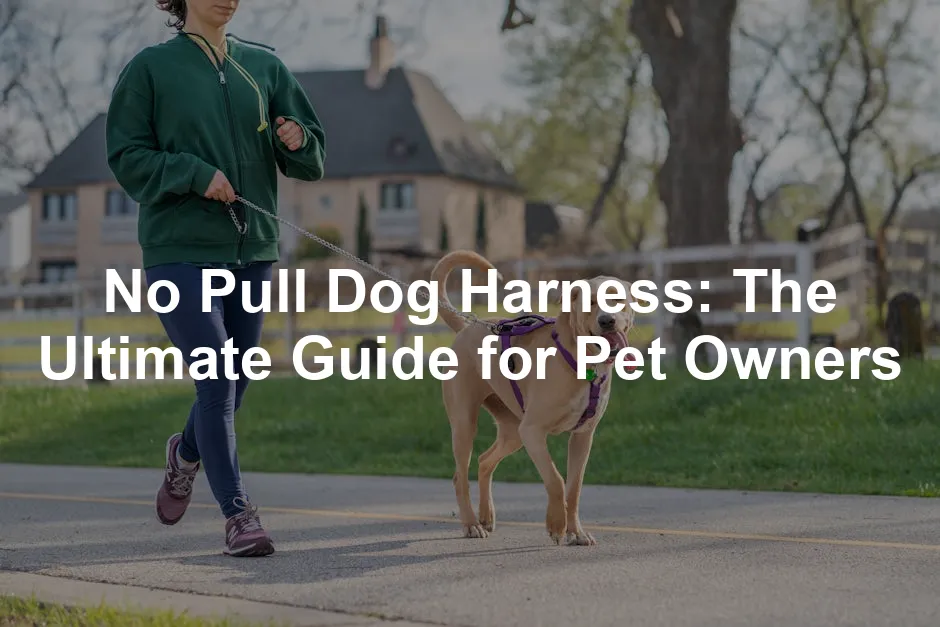Understanding No Pull Dog Harnesses
What is a No Pull Dog Harness?
A no-pull dog harness is a specialized tool designed to stop pulling behavior during walks. Unlike traditional collars, these harnesses distribute pressure evenly across a dog’s body. This design prevents strain on the neck, reducing the risk of injury.
No-pull harnesses typically feature a front clip and a back clip. The front clip helps redirect your dog’s movement, making it easier for you to maintain control. When the leash pulls, the harness gently guides the dog back towards you. This method is effective for training and encourages better walking habits.
Statistics show that approximately 60% of dog owners report pulling as a common issue. A no-pull harness offers a solution for this challenge. By using one, you can enhance your walking experience while ensuring your dog’s safety and comfort.
Consider your dog’s pulling behavior when choosing a harness. Are they strong pullers or more relaxed? Understanding this will help you select the best harness for your furry friend.

Benefits of Using a No Pull Dog Harness
Enhanced Control and Safety
No pull dog harnesses truly shine when it comes to control and safety during walks. Unlike traditional collars, these harnesses distribute pressure evenly across your dog’s body. This reduces strain on their neck, which is vital for their health. In fact, injuries from collar pulling can lead to serious neck and throat issues.
With a no pull harness, you gain better control over your dog. When your furry friend pulls, the harness gently redirects their movement. This makes it easier to manage strong pullers. Additionally, a well-fitted harness prevents escape and improves safety during walks. You can focus on enjoying your time together, knowing your dog is comfortable and secure. Have you had any experiences with traditional collars? Share your stories with us!
For those particularly stubborn pups, consider pairing your no-pull harness with a Dog Training Clicker. This handy tool can make a world of difference in reinforcing good behavior and helping your dog learn to walk nicely on a leash. Plus, it’s a fun way to bond with your furry friend!

Improved Walking Experience
Walking with a no pull harness can transform your outings. Many dog owners report that walks become far more enjoyable. With reduced pulling, both dogs and owners experience less stress and frustration. Imagine a peaceful stroll where your dog isn’t tugging at the leash.
Statistics suggest that the average duration of walks increases significantly when using a no pull harness. Instead of constantly battling against pulling, you can relax and enjoy the scenery. Your dog will also feel more at ease, leading to better behavior. It’s a win-win! What does your walking routine look like? We’d love to hear your tips and experiences!
To keep your dog hydrated during those longer walks, consider investing in a Portable Dog Water Bottle. It’s perfect for on-the-go hydration and ensures your pup stays refreshed!

Choosing the Right No Pull Dog Harness
Size and Fit Considerations
Finding the right size for your dog’s harness is crucial. Start by measuring your dog’s girth, which is the widest part of their chest. Use a soft measuring tape to get an accurate number. Make sure the tape is snug but not too tight. Record this measurement. Next, check the distance from the base of the neck to the base of the tail. This length helps determine the correct fit.
A snug harness is essential to prevent chafing and discomfort. Look for a harness that allows you to fit two fingers between the straps and your dog’s body. Many reputable brands provide size charts to help you choose the best fit based on your measurements. Always compare your dog’s measurements with these charts before purchasing.
Don’t forget to check your dog’s measurements regularly, especially if they’re still growing. A good fit enhances their comfort and safety during walks. So, grab that measuring tape and ensure your pup is ready for their new harness!

Types of No Pull Harnesses
When choosing a no-pull harness, consider the different styles available. Two popular types are front-clip and back-clip harnesses. Front-clip harnesses attach the leash at the front, which helps redirect pulling by turning your dog back toward you. This style is often favored for strong pullers.
On the other hand, back-clip harnesses attach the leash at the back. These are suitable for dogs that walk nicely but may still need some guidance. While they offer convenience, they might not control pulling as effectively as front-clip options.
Each style has its pros and cons. Front-clip harnesses are great for training, but some dogs may find them restrictive. Back-clip harnesses are easier to put on, but can encourage pulling for some dogs. Think about your dog’s specific needs and walking behavior. This will help you choose the right type of harness for a more enjoyable walking experience.

Popular Brands and Models
Top No Pull Dog Harness Recommendations
Choosing the right no-pull harness can make a difference in your dog’s walking experience. Here are some highly recommended brands and models that stand out.
- PetSafe Easy Walk Harness
Price: $18
This harness is loved for its lightweight design. It features a martingale loop on the front to redirect pulling without stress on the neck. Many consumers praise its effectiveness and comfort. Check it out here! - Rabbitgoo Dog Harness
Price: $15
With four adjustable straps, this harness provides a snug fit for various sizes. It includes two attachment points for added versatility during training. Users appreciate its reflective strips for safety. Take a look! - Ruffwear Front Range Harness
Price: $61
Ideal for adventurous dogs, this harness offers padded panels for comfort. It has both front and back attachment points, allowing for better control. Owners rave about its durability during hikes. Explore it here! - 2 Hounds Design Freedom Harness
Price: $42
This harness is designed for larger breeds, accommodating dogs up to 250 pounds. Its velvet lining prevents chafing, making it comfortable for daily use. Customers report a significant reduction in pulling behavior. Find it here! - Halti No Pull Harness
Price: $29
Known for its unique stop-pull lifting feature, this harness provides excellent control. The padded chest panel adds comfort, and its lightweight design allows for easy movement. Many users find it effective and easy to fit. Check it out!

These options reflect a mix of features and price points that cater to various dog sizes and needs. Each model has received positive consumer ratings, ensuring you find one that suits your furry friend. Interested in any of these harnesses? Check them out!
Training Tips for Using a No Pull Dog Harness
Acclimating Your Dog
Introducing a no-pull harness to your dog requires patience and positive reinforcement. Start by letting your dog sniff and explore the harness. This builds curiosity and comfort before you put it on them.
Once your dog seems comfortable, gently place the harness on them. Reward them with treats and praise for staying calm. Gradually increase the time they wear it during indoor play. This helps them adjust without feeling overwhelmed.
When you’re ready to go outside, keep the first few walks short. Use treats to encourage good behavior and reinforce walking nicely beside you. Remember, patience is key. If your dog pulls, stop walking until they calm down.
This technique teaches them that pulling doesn’t lead to movement. Share your training experiences in the comments! What methods have worked for you?

Techniques to Reduce Pulling
Training your dog to walk politely can be a game changer. Start with simple commands such as “heel” or “let’s go.” These commands signal your dog to stay close. Use treats to reward your dog for walking beside you. This creates a positive association with loose leash walking.
Another effective technique is the “stop and go” method. If your dog pulls, stop walking immediately. Only resume when the leash is slack. This teaches your dog that pulling doesn’t lead to movement.
Success rates vary, but many trainers report up to an 80% improvement in pulling behavior using these techniques. Consistency is key! Be patient and practice regularly.
Have you tried these methods? We’d love to hear your experiences. Give these techniques a shot and let us know how they work for you!
To further enhance your training sessions, consider using a Dog Treat Pouch. It keeps your treats organized and easily accessible, making training more efficient and fun!

Care and Maintenance of No Pull Harnesses
Cleaning and Maintenance Tips
Taking care of your no-pull harness ensures its longevity. Start by checking the manufacturer’s instructions for cleaning. Many harnesses are machine washable, making maintenance easy. Use a gentle cycle and air dry to preserve the material.
Regularly inspect the harness for wear and tear. Look for frayed straps or damaged buckles. Addressing these issues promptly can prevent accidents.
The lifespan of a harness varies by material. Nylon harnesses typically last 1-3 years, while more durable options can last longer. Keeping your harness clean and well-maintained not only enhances its durability but also ensures your dog’s comfort.
How do you maintain your pet gear? Share your tips with us!

For extra care, consider using a Pet First Aid Kit. It’s essential for emergencies and ensures you’re always prepared for your dog’s needs!
Conclusion
In summary, no-pull harnesses are a valuable tool for dog owners. They enhance the walking experience for both pets and their humans. Proper training techniques can significantly reduce pulling behavior.
Remember to choose the right harness for your dog’s needs. Your investment in a no-pull harness can lead to many enjoyable walks together. Please share your thoughts and experiences in the comments below!
Please let us know what you think about our content by leaving a comment down below!
Thank you for reading till here 🙂
All images from Pexels





